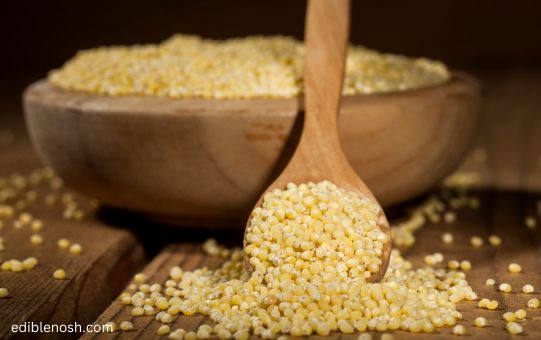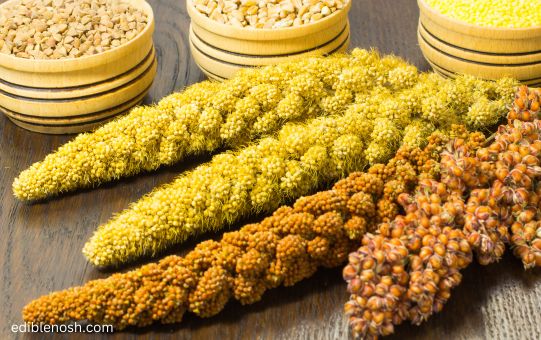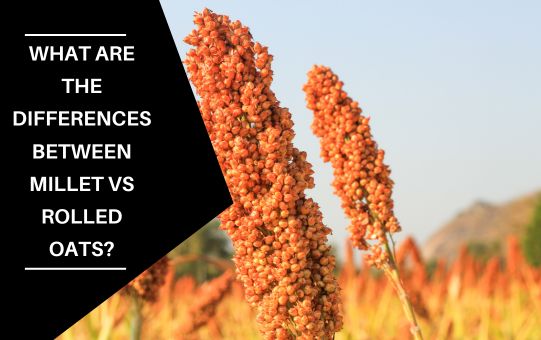Explore the wonderful difference in taste between millet vs sorghum, two incredible and ancient grains. Dive into the world of flavors, where millet reveals its subtly nutty and delicate essence, while sorghum unveils a bold and deliciously savory charm.
What is the difference between millet vs sorghum taste? When it comes to incorporating nutritious grains into our diets, millet and sorghum are two options that often come to mind. These ancient grains have gained popularity in recent years due to their health benefits and versatility in various culinary dishes.
However, many people wonder about the difference between millet and sorghum taste-wise. Here we will delve into the flavors of millet vs sorghum, exploring their unique profiles and helping you understand which grain might suit your palate best.
What is the Difference Between Millet vs Sorghum Taste?
Millet and sorghum may both be grains, but they possess distinctive taste characteristics that set them apart. Understanding these differences is essential in choosing the right grain for your recipes. Let’s explore the taste of millet and sorghum individually.
1. Millet Taste: Nutty and Mild
Millet has a subtly nutty and mild flavor that makes it incredibly versatile in various dishes. Its taste is often described as earthy with hints of corn and a mild sweetness.
Millet’s flavor profile is less pronounced compared to other grains, making it an excellent choice for those seeking a neutral base to complement other ingredients in a recipe.

2. Sorghum Taste: Rich and Savory
On the other hand, sorghum boasts a more robust and savory taste. It has a distinctive deep flavor profile that can be likened to a blend of nuts, spices, and molasses. Sorghum’s flavor is often described as rich, slightly sweet, and with hints of umami.

This grain adds a unique depth to dishes, making it a favorite in hearty stews, pilafs, and porridges.
Read Also>>> What are the differences in millet vs millet flour?
| Millet | Sorghum |
| Mild, nutty flavor | Rich, savory flavor |
| Subtle sweetness | Deep, slightly sweet taste |
| Earthy undertones | Blend of nuts, spices, and molasses |
| Mild, neutral base for recipes | Adds depth and richness to dishes |
| Slightly crunchy texture when cooked | Chewier texture, retains shape well |
| Gluten-free | Gluten-free |
| Versatile for complementing other ingredients | Contributes distinctive taste to dishes |
| Suitable for vegan and vegetarian diets | Suitable for vegan and vegetarian diets |
Conclusion
Understanding the taste differences between millet and sorghum can help you select the grain that best suits your culinary preferences and the recipes you wish to create.
Millet offers a nutty and mild flavor, perfect for complementing other ingredients, while sorghum boasts a richer, savory taste that adds depth to various dishes. Experimenting with both grains will allow you to explore their versatility and find the flavors that resonate most with your taste buds.
See Also>>> What are the differences between millet vs rolled oats?
Millet vs Sorghum: FAQs
Following are the FAQs related to millet vs sorghum:
Can millet and sorghum be used interchangeably in recipes?
Yes, millet and sorghum can often be used interchangeably in recipes. However, keep in mind that their taste profiles differ. Millet’s mild flavor lends itself well to complement other ingredients, while sorghum’s richer taste adds depth to dishes.
Are millet and sorghum gluten-free?
Yes, both millet and sorghum are naturally gluten-free grains, making them suitable options for individuals with gluten sensitivities or celiac disease.
which is healthier millet or sorghum?
Both millet and sorghum are nutritious grains, but their healthiness depends on individual nutritional needs and dietary preferences. It is recommended to consult a healthcare professional or nutritionist for personalized advice.
Can millet and sorghum be used in baking?
Absolutely! Both millet and sorghum flours can be used in gluten-free baking. Millet flour adds a delicate crumb texture, while sorghum flour contributes a richer, denser texture to baked goods.
What is millet sorghum difference?
Millet and sorghum are both gluten-free ancient grains, but they come from different plant families (Poaceae and Sorghum bicolor, respectively) and have distinct flavors and textures when cooked.

